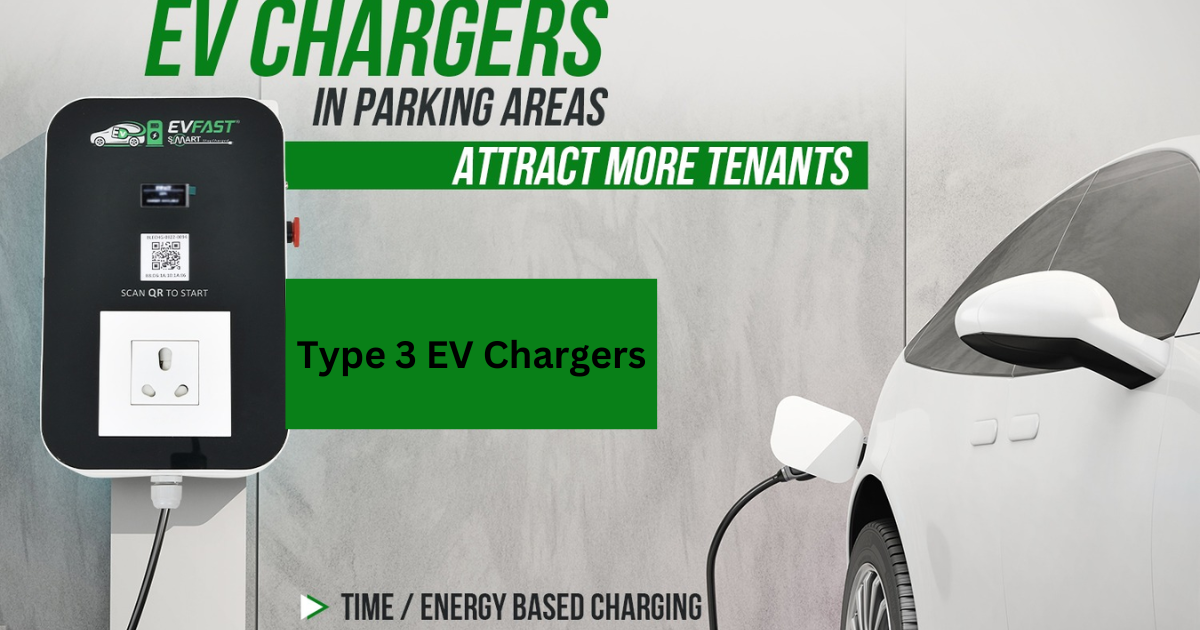As electric vehicles (EVs) continue to gain traction worldwide, the need for efficient and diverse charging solutions becomes increasingly apparent. Among the various EV charger types, Type 1 and Type 3 stand out as key players, each catering to specific regions and preferences. In this article, we’ll delve into the distinctions between Type 1 and Type 3 EV chargers, shedding light on crucial aspects that customers should consider.
1. Connector Types:
Type 1 EV Charger employs the J1772 connector, commonly found in North America and Japan, with five pins for power and communication. On the other hand, the Type 3 EV Charger utilizes the IEC 62196-2 connector, also known as the “Mennekes” connector, prevalent in Europe, featuring seven pins for power and communication.
2. Charging Speed:
Type 1 EV Charger typically offers charging speeds of up to 7.4 kW or 7.7 kW, resulting in a charging time of approximately 6-8 hours for a typical electric vehicle. Meanwhile, the Type 3 EV Charger boasts faster charging speeds of up to 22 kW, significantly reducing the charging time compared to Type 1 chargers, depending on the vehicle’s capabilities.
3. Compatibility:
Type 1 EV Charger is compatible with most electric vehicles in North America and Japan that use the J1772 connector. However, it may not be suitable for vehicles with higher charging capacities. In contrast, the Type 3 EV Charger is widely compatible with electric vehicles in Europe using the Mennekes connector, designed to handle higher charging capacities and a broader range of vehicles.
4. Infrastructure Availability:
Type 1 EV chargers are more prevalent in North America and Japan, where the J1772 standard is widely adopted. These chargers are commonly found in public charging stations and residential settings. Conversely, the Type 3 EV Charger is more common in Europe, integrated into public charging networks and commercial locations throughout the continent, reflecting the widespread use of the Mennekes connector.
5. Future-proofing:
Type 1 EV chargers, while still widely used, may not support the higher charging capacities that future electric vehicles might require. Users must consider the future compatibility of their chosen charger. On the other hand, the Type 3 EV Charger is designed with higher charging capacities in mind, offering more flexibility and acting as a future-proof option for evolving electric vehicle technology.
6. Global Adoption:
Type 1 chargers are predominantly used in North America and Japan, while Type 3 chargers are more widespread in Europe. Consider the geographic location and the prevalent connector standards when choosing a charger for your electric vehicle.
7. Adaptability:
Some Type 1 chargers may come with adapters to make them compatible with certain Type 2 or Type 3 connectors. Assessing the adaptability of your charger can be advantageous, especially if you plan to travel internationally.
8. Cost Variations:
Type 1 and Type 3 chargers may vary in terms of manufacturing and installation costs. Understanding the cost implications can influence your decision, especially for individuals or businesses looking to invest in multiple charging stations.
9. Government Regulations:
Local government regulations and incentives can impact the choice between Type 1 and Type 3 chargers. Some regions may have specific standards or offer incentives for installing certain types of chargers, influencing your decision based on local policies.
10. User Convenience and Experience:
Consider user-friendliness and ease of use when selecting a charger. Some users may find one connector type more convenient than the other, impacting their overall charging experience.
In conclusion, choosing between Type 1 and Type 3 EV chargers involves careful consideration of connector types, charging speeds, compatibility, infrastructure availability, and future-proofing. Assessing additional factors such as global adoption, adaptability, cost variations, government regulations, and user convenience further refines the decision-making process, ensuring that your chosen charger aligns seamlessly with your electric vehicle and charging needs.

